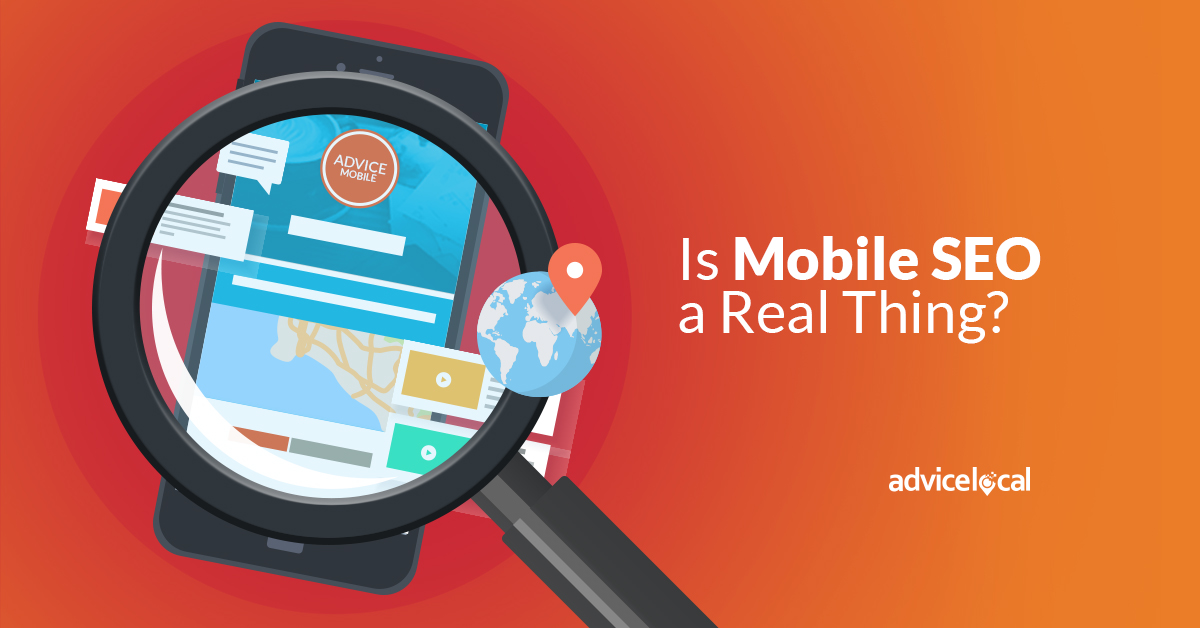As you know, I have written countless articles on SEO, local SEO, design, content and even mobile optimization. The thought that comes to mind for many not in this industry when they hear about mobile SEO is: “Mobile SEO really isn’t any different than the other types of SEO.”
SEO (search engine optimization) is the optimization of pages and posts to place higher in a general search. Local SEO is a deeper dive into optimization, but for a specific geographic area. Mobile SEO is taking it even further by optimizing for a general search, a local search and for the user searching on mobile specifically.
So Why is Mobile a Big Deal?
As I addressed in this article, “What is Google’s Mobile-First Index and How Can a Business Prepare for It?,” Google is changing the primary index used to deliver search results on desktop and mobile to a mobile-first focus.
Sites that place well in desktop search results right now but do not place well in mobile can potentially see their first page placement move into second and third page placements if they don’t fix their mobile optimization now. Sites that currently place well in mobile, but not so well in desktop search, can potentially see a bump to the first page in desktop search.
I’m not going to go into how to optimize for the mobile-first index here, so please click the two links above and read about it in-depth. Instead, let’s explore what else a local business needs to do.
What Can a Local Business or Brand Do?
Beyond optimizing a website for design, user experience and mobile search, businesses need to have accurate location data.
I’m not just saying this because I want you to submit more businesses through our local presence management solution, but because this data is driving SERPs placement, trust and so much more.
Don’t Take My Word for It; Here Are Some Stats to Back It Up
- 73% of consumers lose trust in a business when they find inaccurate location data online
- 67% of consumers report they lose trust in a brand if they get lost en route
- $3.1 trillion each year is the cost of bad data in the U.S. according to IBM’s prediction
Do you know that when consumers lose trust, they don’t click to visit a website? When they do click and then click right back to SERPs, search engines perceive this as an indicator that the page being displayed in SERPs isn’t providing value for the searcher. When this pattern happens repeatedly, the page will move down in placement and eventually could be bumped to the second, third or fourth page of results. By the way, that is after position 20, 30, 40, etc.
Improving Trust Can Be Simple
1. Going Back to Data
It all starts with consistency. Clean up those bad listings, duplicate listings and closed locations.
2. Improve Site Content
Remember E-A-T? Expertise, Authoritativeness and Trustworthiness. Pages and posts that don’t integrate these elements need to be cleaned up.
3. Get Rid of Duplicates
If duplicate content is an issue, replace it, delete it or redirect to a page that meets Google’s guidelines and content best practices.
4. Lack of Reviews or Bad Reviews?
Develop a strategy to get more, respond to those bad reviews and work to resolve them. The reviewer may consider a revision once you solve their problem.
You Don’t Have to Go at It Alone
These are just a few of the things a local business or brand can do to improve trust with consumers and search engines. If time and the team is an issue, Advice Local is here to help. Request a demo to learn more.




![Epic Guide to Local SEO Download [ad]](https://www.advicelocal.com/images/epic-guide-local-SEO-download-cta.png)
Great article – it really all does come down to the basics that we build on. Without that foundation, you’re just not able to build a truly strong presence.
Thanks!